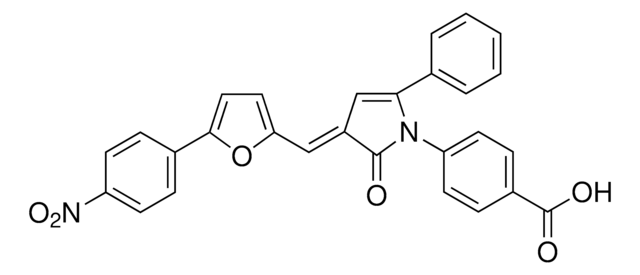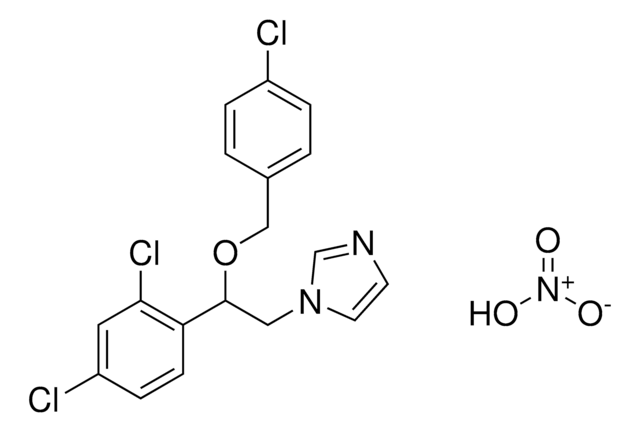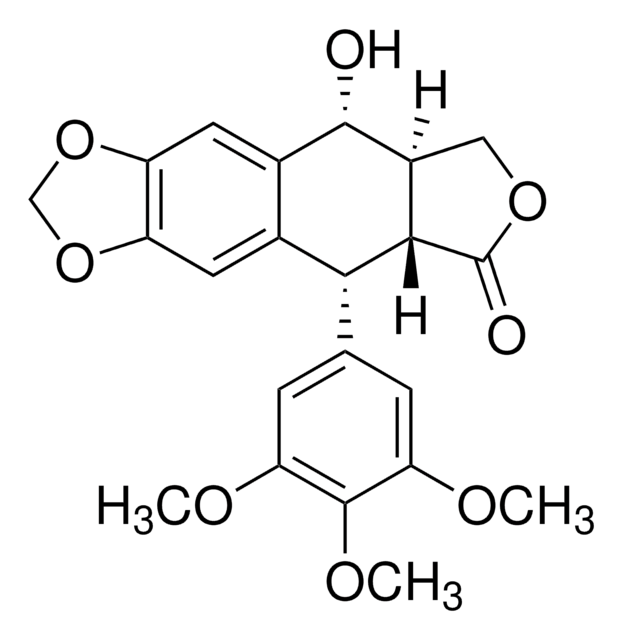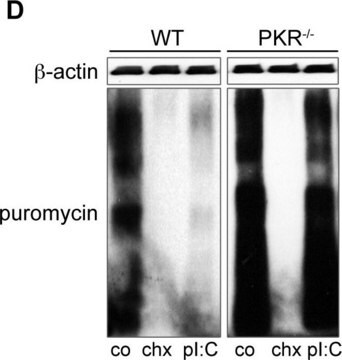Key Documents
E2375
Emetine dihydrochloride
Synonim(y):
6′,7′,10,11-Tetramethoxyemetan dihydrochloride
About This Item
Polecane produkty
Poziom jakości
spektrum działania antybiotyku
parasites
Tryb działania
protein synthesis | interferes
temp. przechowywania
2-8°C
ciąg SMILES
[H][C@@]12C[C@H](C[C@@]3([H])NCCC4=C3C=C(OC)C(OC)=C4)[C@@H](CC)CN1CCC5=C2C=C(OC)C(OC)=C5
InChI
1S/C29H40N2O4.2ClH/c1-6-18-17-31-10-8-20-14-27(33-3)29(35-5)16-23(20)25(31)12-21(18)11-24-22-15-28(34-4)26(32-2)13-19(22)7-9-30-24;;/h13-16,18,21,24-25,30H,6-12,17H2,1-5H3;2*1H/t18-,21-,24+,25-;;/m0../s1
Klucz InChI
JROGBPMEKVAPEH-GXGBFOEMSA-N
Szukasz podobnych produktów? Odwiedź Przewodnik dotyczący porównywania produktów
Zastosowanie
- as a protein synthesis inhibitor to study its effects on human papillomavirus type 8 E2 protein half-life
- to study its effects on the stress granules assembly
- as a chain-elongation inhibitor in puromycin assay for protein synthesis
Działania biochem./fizjol.
Cechy i korzyści
Hasło ostrzegawcze
Danger
Zwroty wskazujące rodzaj zagrożenia
Zwroty wskazujące środki ostrożności
Klasyfikacja zagrożeń
Acute Tox. 1 Oral - Eye Irrit. 2 - Skin Irrit. 2
Kod klasy składowania
6.1A - Combustible acute toxic Cat. 1 and 2 / very toxic hazardous materials
Klasa zagrożenia wodnego (WGK)
WGK 3
Temperatura zapłonu (°F)
Not applicable
Temperatura zapłonu (°C)
Not applicable
Certyfikaty analizy (CoA)
Poszukaj Certyfikaty analizy (CoA), wpisując numer partii/serii produktów. Numery serii i partii można znaleźć na etykiecie produktu po słowach „seria” lub „partia”.
Masz już ten produkt?
Dokumenty związane z niedawno zakupionymi produktami zostały zamieszczone w Bibliotece dokumentów.
Klienci oglądali również te produkty
Nasz zespół naukowców ma doświadczenie we wszystkich obszarach badań, w tym w naukach przyrodniczych, materiałoznawstwie, syntezie chemicznej, chromatografii, analityce i wielu innych dziedzinach.
Skontaktuj się z zespołem ds. pomocy technicznej











